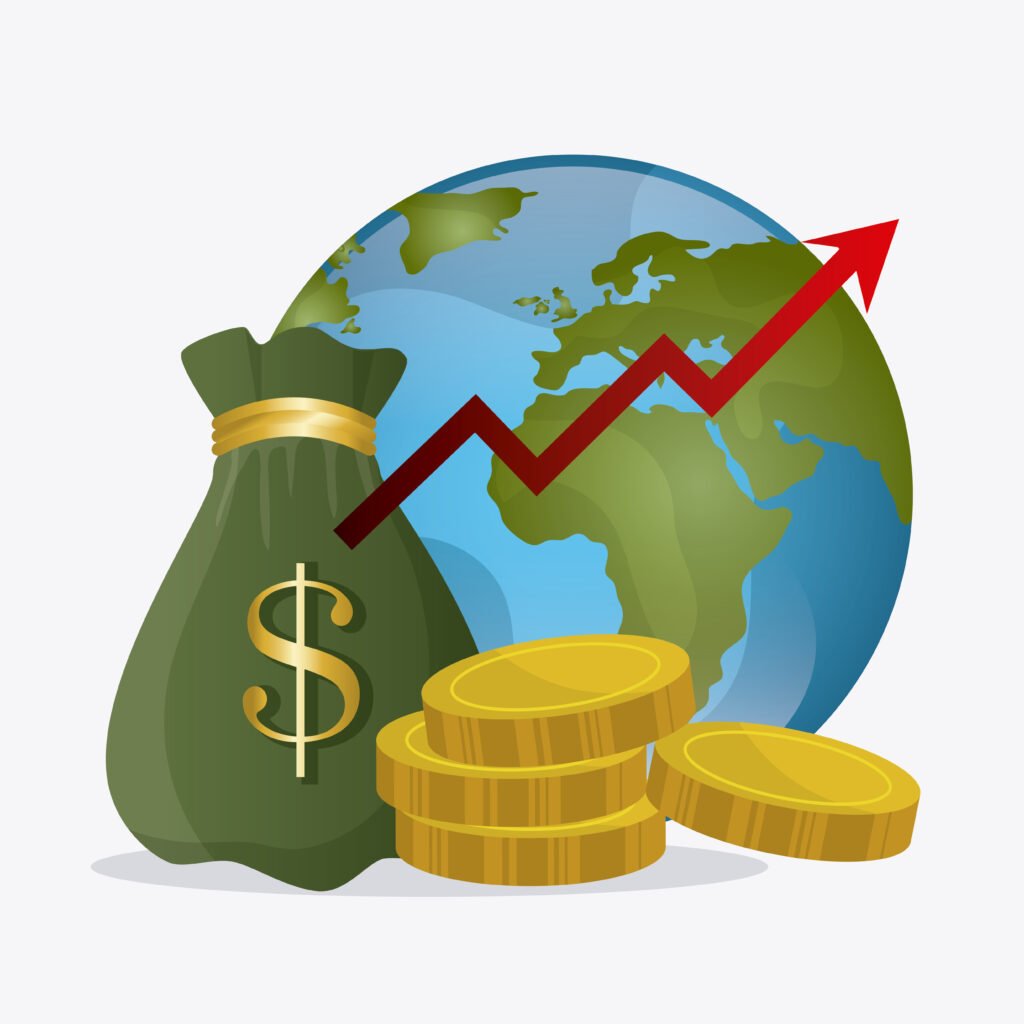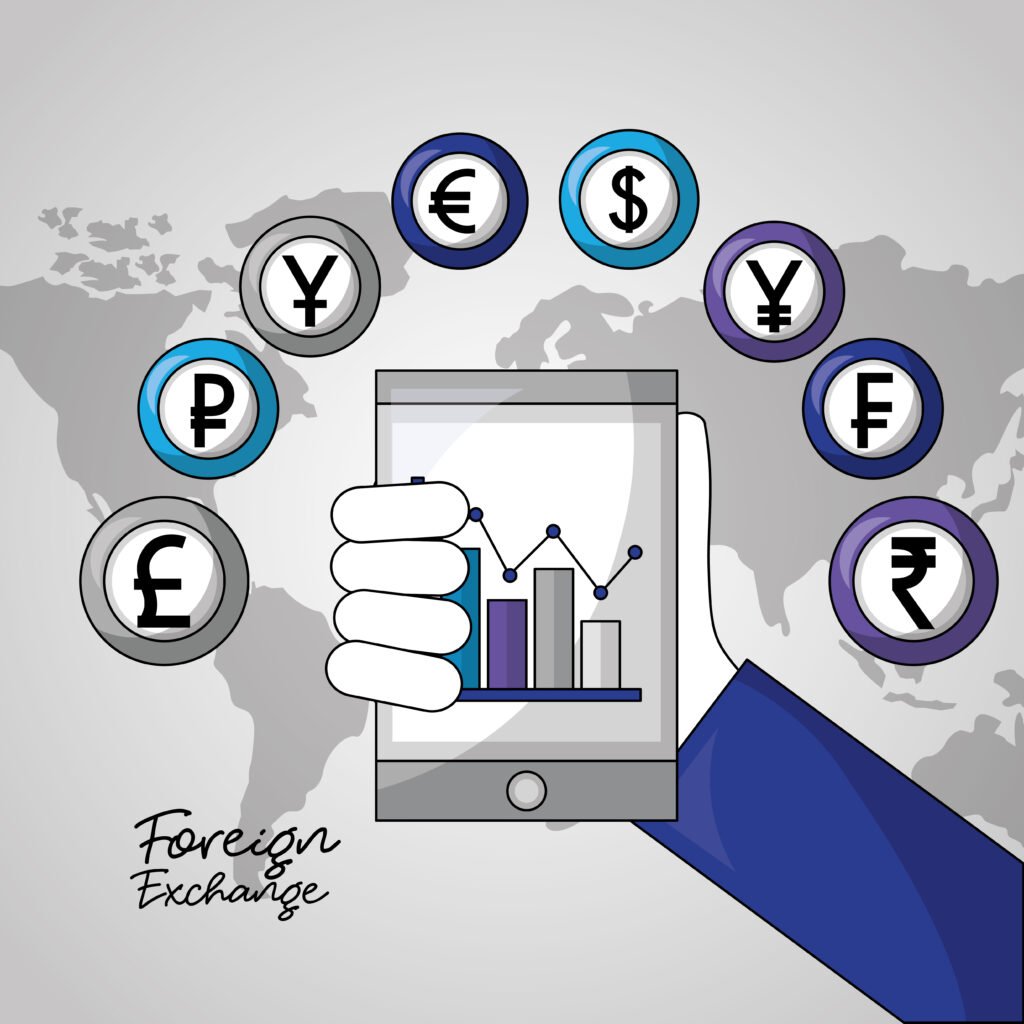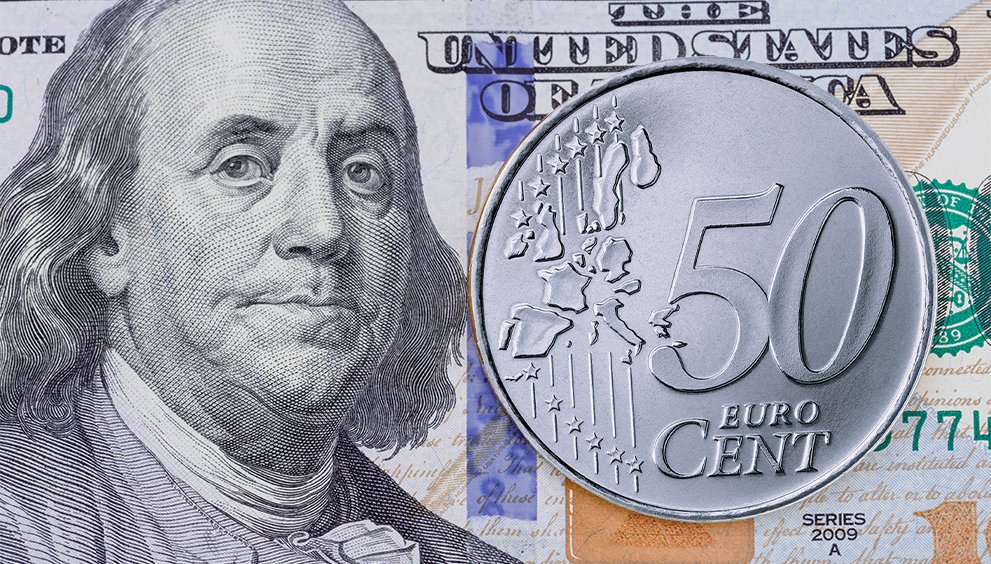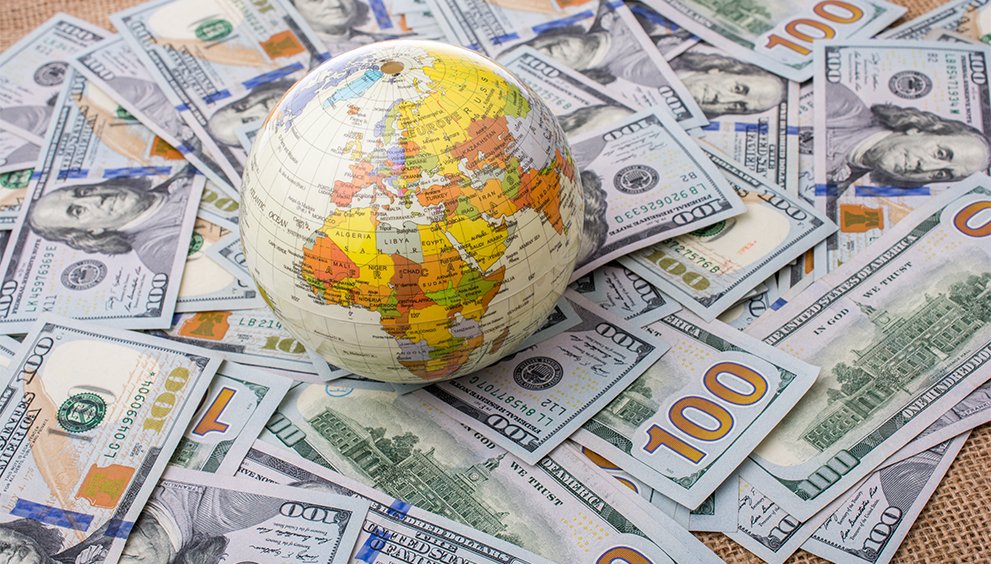Why the US Dollar Dominates Global Trade: An Economic Perspective

Over the years, the US Dollar has really been the cornerstone of global economics, whether in trade or investments. When it comes to oil transactions, government debt, or cross-border business payments, the dollar truly stands out as the world’s most relied-upon and trusted currency. So, what fuels the USD’s impressive role in international trade? Why do investors turn to the greenback when the market is risk-sensitive due to geopolitical concerns or experiencing volatility? As conversations around de-dollarisation grow, is there a chance its stronghold is facing new challenges and threats?
Through this article, we will explore how and why the US dollar rules the world of economic and global trades, what are the key economic foundations behind the US dollar’s international role, why businesses and governments rely on it, and whether a shift away from the dollar is feasible.
The US Dollar = The Global Reserve Currency
Central banks, financial institutions, and governments widely hold a reserve currency in significant quantities. It is critical in facilitating international transactions, settling debts, and stabilising economies during financial uncertainty—cornerstones of global economic stability and trust in international trade.
Historical Context:
The US dollar’s ascent began with the Bretton Woods Agreement 1944, which pegged currencies to the dollar (convertible to gold at $35 per ounce). After the system’s collapse in 1971, the dollar held its dominance thanks to:
- The unmatched size of the US economy.
- Deep, liquid financial markets.
- Its role in pricing commodities like oil.
- US Dollar’s Dominance in Reserves
The dollar commands a significant share of global foreign exchange reserves, averaging around 58% in 2024, per the International Monetary Fund (IMF).
IMF COFER data highlights:
- Q2 2024: 58.22%.
- Q3 2024: 57.39%.
This reflects a slow decline from over 70% in the early 2000s as countries diversify their holdings.
Broader Role in Global Finance
- Beyond reserves, the dollar anchors global trade and finance:
- Over 80% of trade transactions involve the dollar (Bank for International Settlements, 2022).
- Nearly 90% of forex market turnover includes it (BIS, 2022).
- This ubiquity boosts its value and cements US economic influence worldwide.
- Implications of Reliance on the Dollar
The dollar’s dominance shapes exchange rates, interest rates, and trade balances globally, granting the US unique advantages like cheaper borrowing. However, it also creates vulnerabilities—any wobble in US economic confidence could ripple worldwide.
Emerging Alternatives
Alternatives are gaining ground, though they lag far behind:
- Euro: 20.5% of reserves in Q3 2024 (IMF).
- Chinese yuan: 2.8% in Q3 2024, a small but growing share.
Efforts by nations like China and Russia to reduce dollar reliance (e.g., de-dollarisation) highlight tensions, but the dollar’s lead remains unchallenged.
Why Do Countries Hold US Dollars?
Countries hold US dollars for several key reasons, largely related to economic stability, trade, and investment. Here’s why the US dollar is so widely held and used globally:
Economic Stability:
- The US economy stands out due to its deep capital markets that offer a diverse range of investment opportunities.
- Additionally, a robust legal framework enhances trust in the currency, making it appealing for countries looking to stabilise their own economic systems.
- This perceived reliability encourages governments and institutions to hold onto US dollars as a safe haven.
Liquidity and Accessibility
- The US dollar is recognised as the most liquid currency worldwide.
- This means that it can be rapidly converted into various goods, services, or assets without experiencing significant price fluctuations.
- Such liquidity is crucial for countries that need to access funds quickly to manage economic activities or emergencies, demonstrating the dollar’s utility in global finance.
Global Trade Reliance
- Many international contracts, particularly those in commodities, oil, and manufacturing, are settled in US dollars.
- The widespread acceptance of the dollar in trade agreements simplifies transactions and solidifies the currency’s position in global commerce.
- By conducting business in USD, countries can streamline operations and reduce the costs associated with currency exchanges.
Debt and Bonds
- A significant amount of global debt is denominated in US dollars.
- As a result, countries must maintain USD reserves to service these loans, underscoring the dollar’s role in international lending and borrowing practices.
- The reliance on USD for debt obligations means that countries are compelled to hold substantial amounts of the currency.
Impact on Global Trade
-
Facilitates International Transactions :
Given that the majority of trade agreements rely on a USD basis, businesses benefit from the simplicity of dealing in a single, widely accepted currency. This uniformity reduces transaction costs and complexity, promoting smoother international trade relationships.
- Reduces Currency Risks
Countries that hold substantial US dollar reserves can further stabilise their economies against the volatility of other currencies. This is particularly crucial during financial crises when fluctuations can lead to instability and uncertainty in local economies. Dollar reserves provide a buffer to absorb shocks from global market changes.
However, this dependence on the dollar has its downsides; changes in US monetary policy, such as interest rate increases from the Federal Reserve, can ripple through global markets, influencing economic conditions in various countries and potentially leading to instability.
The US Dollar’s Role in Global Trade & Supply Chains
The dominance of the US dollar in trade and supply chains is attributable to its function as a standard medium of exchange. This standardisation significantly reduces the complexities associated with managing multiple currencies, providing efficiency in cross-border transactions.
Key Sectors Priced in USD
Several key sectors and commodities are priced in US dollars, making the currency a critical component of global trade and finance. Here are some of the most prominent sectors:
-
Oil & Commodities
A considerable portion of the world’s oil, natural gas, gold, and agricultural goods are priced and traded in US dollars. This pricing strategy ensures stable global pricing, minimising the risks associated with currency fluctuations in international markets.
-
Manufacturing & Exports
Export-driven economies, such as China and Germany, often invoice their goods in USD to enhance predictability and reduce exposure to currency risk. This practice further entrenches the dollar’s position in global trade.
-
Shipping & Logistics
Most international shipping contracts are executed in USD, reflecting a preference for stability in an otherwise unpredictable logistical environment. By using a common currency, businesses can manage their shipping costs more effectively.
Example: The Oil Market’s USD Dependence
Since the 1970s, OPEC nations have strictly priced oil in US dollars, creating what is known as the “Petrodollar System.” This structure compels oil-importing nations to maintain USD reserves, which reinforces global demand for the currency. Even countries like Russia and China, which are exploring alternative currencies, still rely on USD pricing in global energy markets due to its entrenched nature.
The Economic Strength Behind the US Dollar
The dominance of a currency is not merely a factor of its usage; it inherently stems from the economic power supporting it. Several strong economic factors underpin the US dollar’s preeminent position:
1. US GDP & Economic Size
- The United States accounts for 25% of global GDP, firmly positioning itself as one of the largest economies in the world.
- This substantial economic presence naturally leads businesses and governments worldwide to engage in USD transactions, given the volume of economic activity.
2. Federal Reserve’s Influence
- The monetary policy shaped by the Federal Reserve holds considerable sway over global financial markets.
- When the Fed raises interest rates, it often results in a stronger dollar that attracts foreign investors seeking yield.
- Consequently, dollar-denominated debt becomes more expensive, thus increasing the demand for USD holdings and reinforcing its global standing.
3. US Financial Markets’ Global Reach
- The US stock market is a significant destination for trillions in foreign investment, which drives the demand for USD.
- Additionally, US Treasury bonds are widely regarded as the safest investment globally, prompting financial investors to hold dollars as a safeguard against risks.
- This combination of economic strength, unmatched liquidity, and extensive market dominance solidifies the dollar’s status as the default currency for international transactions.
4. The Global Debt Market and the US Dollar’s Grip
- The US dollar (USD) plays a pivotal role in the global debt market, with many countries and corporations opting to issue debt in this currency.
- This practice not only reinforces the dollar’s dominance in global finance but also facilitates international business transactions across various industries and economies.
Why do Governments & Corporations Borrow in USD
1. Lower Interest Rates
- One of the key reasons for borrowing in US dollars is the typically lower interest rates associated with USD loans compared to those in local currencies.
- This financial advantage can significantly reduce the overall cost of borrowing, making USD a preferred choice for governments and corporations alike.
2. More Stability
- Loans denominated in USD provide a safeguard against fluctuations in local currencies.
- In regions where currency volatility is a concern, borrowing in a stable currency like the dollar mitigates potential financial risks and ensures predictability in repayments.
3. IMF & World Bank Loans
- Major global financial institutions, such as the International Monetary Fund (IMF) and the World Bank, issue loans primarily in US dollars.
- This practice further embeds the dollar’s prominence in global financial systems and emphasises its status as a default currency for international financing.
Key Facts
- More than 50% of global debt is issued in US dollars, underscoring its critical role in worldwide economic dealings.
- During periods of financial instability, the Federal Reserve often steps in to supply USD liquidity to stabilise global markets, as was evident during the 2008 financial crisis and the COVID-19 pandemic.
- This dependence on dollar-denominated debt establishes a cycle where countries must continually acquire and trade in USD, thereby sustaining their demand and influence globally.
Challenges to US Dollar Dominance: Is De-Dollarisation Possible?
Despite the US dollar’s strengths, there is a growing movement among several countries aiming to lessen their reliance on USD in global trade, a phenomenon referred to as de-dollarisation. This shift reflects evolving economic landscapes and geopolitical strategies.
1. Rise of Alternative Currencies
- Chinese Yuan (CNY): China is actively promoting the international use of its currency, the renminbi (RMB), especially within the framework of the Belt and Road Initiative, which enhances its financial ties with partner nations.
- Euro (EUR): As the second-largest reserve currency, the euro possesses influence but falls short in comparison to the USD’s extensive financial markets and liquidity options, limiting its capacity to challenge the dollar’s dominance effectively.
2. Shift to Regional Trade Agreements
Countries such as Russia and India are exploring bilateral trade agreements that circumvent the use of the USD, thereby facilitating direct trade using their local currencies or alternative currencies. Notably, BRICS nations (Brazil, Russia, India, China, and South Africa) are actively developing alternative payment systems aimed at reducing dependency on the US dollar, reflecting a collective effort to reshape global financial dynamics.
3. The Role of Digital Currencies
- China’s Digital Yuan (e-CNY): China is testing its digital currency for cross-border payments, positioning the e-CNY as a potential alternative to the USD in international trade.
- Central Bank Digital Currencies (CBDCs): Central banks around the world are researching and piloting digital currencies that could provide additional pathways for transactions without relying on traditional USD-dominated payment infrastructures.
-
Challenges to Replacing USD:
Though these initiatives signify a potential shift in the global economic landscape, replacing the US dollar requires considerable effort and a structural transformation in the international financial system. Notably, these efforts necessitate:
- Deep and liquid financial markets: Currently, the US has an unparalleled depth in its financial markets, making it challenging for alternative currencies to gain similar traction.
- Trust in institutions and monetary policies: Many countries lack the necessary confidence in their institutions and monetary policies, which could delay any significant transition away from the dollar.
6. Is the US Dollar’s Dominance at Risk?
While the discourse around de-dollarisation is becoming increasingly prominent, the prevailing sentiment indicates that the US dollar is likely to remain the dominant currency in the near future. Several factors contribute to this ongoing dominance:
~Global Trust & Stability: The US dollar continues to be viewed as a reliable currency, especially during times of global crisis, reinforcing its position as the go-to currency for safe-haven investments.
~Financial Market Depth: No other nation can boast the depth and liquidity of its bond and stock markets quite like the US, providing investors with diverse opportunities and stability.
~Trade Network Effect: The existing dominance of the dollar creates a self-sustaining demand, as businesses and governments, particularly in trade, prefer the certainty and familiarity of pricing in USD.
Future Outlook for the US Dollar
- Looking ahead, it is plausible that a multipolar currency system may take shape, with the US dollar, euro, and Chinese yuan coexisting in the global marketplace.
- However, it remains likely that the USD will retain its leading role within this framework.
- The advent of digital finance and the emergence of alternative payment systems may influence reliance on the USD, but a complete shift is not anticipated to occur rapidly.
- The complexities of global finance mean that any transition away from the US dollar will take time and significant changes in financial dynamics globally.
Final Thoughts
The US dollar’s dominance in global trade is deeply rooted in economic strength, financial stability, and widespread acceptance. While alternatives like the yuan and euro are growing, the depth of US financial markets and trade systems ensures that the dollar will remain the world’s most trusted currency for decades to come.
However, economic trends, digital currencies, and geopolitical shifts could gradually reduce the USD’s dominance over time—but for now, it remains the undisputed king of global trade.
Do you think another currency could challenge the US dollar? Let us know your thoughts.


 English
English 





























































































